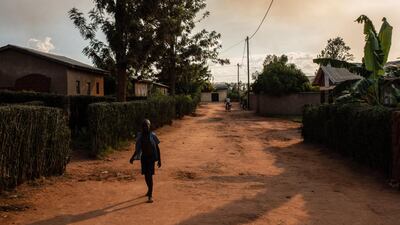“It is not about buildings, but about people.” That is how the director of Unesco’s office in Baghdad, Paolo Fontani, described the efforts of reconstruction in Mosul, the Iraqi city that has witnessed some of the worst urban warfare and aerial bombardment since World War II. And he is right. Reconstruction in post-conflict areas must be about the people first. Reconstructing a society requires justice, forgiveness, opportunity and, importantly, hope. Reconstructing cities requires rebuilding homes, places of work, schools, universities, hospitals, museums and through that, rebuilding livelihoods. What is true for Mosul is true for far too many cities in the Arab world affected by war.
At the Culture Summit in Abu Dhabi this week, Anne-Marie Afeiche, director-general of the National Council of Museums of Lebanon, said that by opening museums and exhibiting artefacts, we are "preserving memory". Those relics of the impact of war and recollections of peace are vital as cautionary tales of the horrors of conflict.
Two-thirds of the Arab world’s 440 million-strong population are under the age of 30. In the past three decades, they have witnessed wars in Aleppo, Tripoli, Sanaa and beyond. They need to see more examples of rebuilding and reviving their cities and less of destruction and regression.
Millions live in countries that are either embroiled in violence, such as Yemen and Libya, emerging from conflict, such as Iraq, or continue to suffer from historic wrongs, such as Palestine. Post-conflict countries like Iraq have different needs from those still in a warzone. Moving from humanitarian relief, to stabilisation, to reconstruction, requires specific skills and competencies.
In the Middle East and North Africa, where unemployment is higher than any other region in the world, reconstruction efforts can provide a means for employment and the revival of historic designs and architecture. Reconstruction can also help medium and large-sized companies rebuild.
Unesco was born 73 years ago with the goal of promoting a “culture of peace”. Few things are more needed today. Creating a path towards peace, embedded in a belief that the people of one country or city have more in common than that which pulls them apart, is vital. Identity is at the heart of cultural restoration. Historic sites and cultural monuments are symbolic of one’s identity but all too often, they are the target of modern-day warfare. The principles for a culture of peace are clear and uncontroversial. However, implementing them is not so simple. Reviving museums and historical sites cannot succeed without true reconciliation.
Yet reconciliation has too often been used as a political football. Conferences often lead to an announcement of a "process" of national reconciliation but its implementation is needed on a local level. Reconstruction can form part of that reconciliation process as projects become a focal point for the betterment of the lives of all those in a community.
Deciding where funding goes is fundamental. Another critical issue is how communities work together on projects as a way of healing war wounds.
There are challenges to reconstruction when conflict is ongoing, or when reconciliation has not yet been tackled. For example, as peace talks for a political settlement in Syria stumble, talk of reconstruction is amplified, but one cannot be used to replace the other.
Syrian reconstruction has now become a political game. Countries that have supported the Syrian regime are keen to push the reconstruction agenda and have countries in the Arab world and Europe foot the bill. However, the US and certain Arab and European countries have no interest in underwriting the regime of Syrian President Bashar Al Assad without seeing any change in behaviour. In a session at the World Economic Forum meeting in the Dead Sea region, Jordan, last week, a lengthy discussion took place about whether reconstruction or reconciliation should come first in Syria. Those discussing the topic could not agree on the priorities or how political reconciliation could come about. However, supporters of the Syrian regime are keen to move reconstruction to the forefront of any conversations about the country to avoid the difficult task of reconciliation and justice. Any moves to ignore reconciliation efforts will mean that reconstruction will be used as a political tool. Building projects and efforts to rehouse can be a symbol of peace – but not if they are in areas where ethnic cleansing has been carried out. Likewise, rebuilding communities and trust cannot be possible when the displaced are doomed to live in ill-equipped camps.
Bringing war-torn societies out of conflict and into peace requires both reconciliation and reconstruction. However, one cannot supersede the other. Reconstruction could become a political tool in the hands of a side that is militarily stronger. However, stalled reconciliation equally cannot be used as an excuse to postpone much-needed reconstruction to house and educate victims of war – because it is not about buildings, but people.


